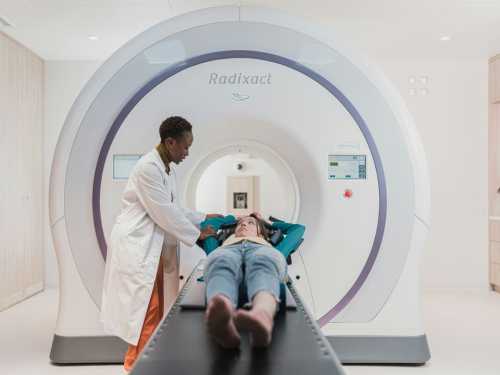
Together with an international team of researchers, scientists from Tomsk Polytechnic University have created an efficient laser, which can tune continuously the wavelength throughout the visible optical range. The results of this study were published in the study of Photonics research journal.
Arbitrary wavelength generation is a fundamental task in modern Photonics. The present decision is based on the effects of nonlinearity in optical crystals and fibers.
In his article for Photonics studies, the authors showed that it is possible to smoothly convert the wavelength laser radiation using photonic crystal fiber with a variable diameter of the Central fiber channel.
The researchers say that the lasers emit in a narrow spectral range, which is determined by the properties of the medium. In order to get the red or green emission, the researchers must either create a new type of laser or to convert an existing wavelength laser radiation. These technologies impose a fundamental limitation on the tuning range and the minimum radiation intensity, as these processes are associated with a high level of noise.
“We wanted to find a solution that will not have the drawbacks of existing approaches, and is simple and effective at the same time,” said Roman Egorov, associate Professor scientific school of the Tomsk Polytechnic University in the field of high energy physics. “We have created a laser fiber, which is created by pump laser pulses with a Central wavelength of 1.04 µm and a duration of one picosecond to 50 femtoseconds. Radiation was directed on tapered photonic crystal fibers (PCFs)”.
Photonic crystal fiber is a special class of optical fiber which has a hollow core (where the light is directed), surrounded by a shell of microscopic holes — hollow, or filled with a special material. By reconfiguring the longitudinal Size of the fiber structure and search for the corresponding fiber material, scientists can use the pump with pulses of different duration and intensity for the wider spectral range.
It was those properties that scientists use. Changing the power and duration of the pump pulse, the researchers easily control the balance of the nonlinear and dispersion inside the fibers. The output of the laser was low signal-to-noise, and wavelength of laser radiation can easily be configured to 420-560 nm range, thus covering most of the visible spectrum, – said Egorov.
“It is known that methods of spectral conversion are very energy intensive,” said Egorov. “We immediately reached CPA from 1 to 2%, although we focused on throughput and not the energy of this configuration. This means that our approach has the potential for increasing energy efficiency at least on par with other popular methods, but at the same time, devoid of the major drawbacks of these methods.”
Today lasers are continuously tunable wavelength of radiation in very high demand in laser scanning microscopy, including bioimaging method that allows researchers to visualize the microstructure of living tissues with the help of special agents. These agents will come on when the use of radiation with a certain wavelength. This is why researchers need a method to fine-tune the laser source to a certain contrast. Analyzing the candlestick pattern of the fluorescent contrast agent, researchers can obtain detailed images of living cells that cannot be visualized otherwise.
Further development of methods of visualization of internal structure of biological objects is one of the priority tasks for biology and physics. The study of biological structures at the microscopic level allows researchers to determine the principles and mechanisms of functioning of living organisms. These methods have a wide range of possible applications, which include a number of relevant fields, such as embryology, Microbiology, Oncology, and many others.
Tomsk Polytechnic University (Tomsk, Russia) participates in the Federal project 5-100. It aims to ensure a fruitful cooperation between universities and their industry partners. This project funds relevant research, and is aimed at strengthening the scientific research capacity of Russian universities.
A list of the main objectives of the project include an increase in academic mobility of scientists, exchange of students with foreign universities in training and scientific research in cooperation with international scientific organizations.
Sourse: sputniknews.com





